Damage limitation: Reducing damage drawn by design
Trends in vehicle evolution can add to the likelihood of damage in transit. While this can be partly mitigated by routing and planning, the vehicle logistics industry can struggle to adapt fast enough...
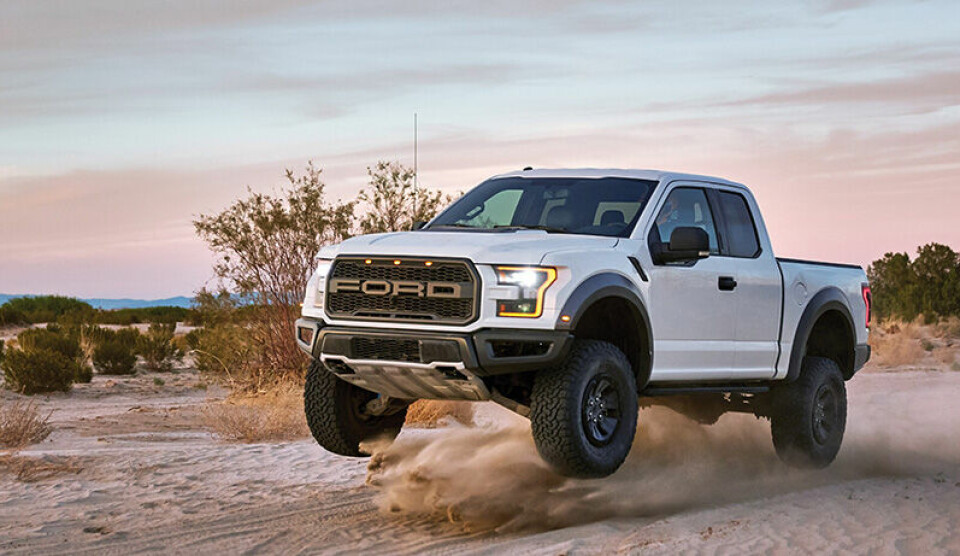
A substantial increase in popular vehicle sizes in recent years has fuelled some of the logistics issues associated with vehicle dimensions
In the ever-changing automotive market, car designers are constantly trying to come up with new designs that combine pleasing aesthetics and practical functionality. But whatever the latest model, the need to protect vehicles on their journey from assembly lines via road, rail and sea to distribution centres and dealerships remains critical. While there are several ways to help minimise damage throughout this supply chain, finished vehicle logistics equipment and processes are not always able to keep up with trends in vehicle sizes, shapes and technology.
In this story...
For example, one development among certain model styles over recent years has been for the vehicles to have lower ground clearances, both for the sake of product differentiation and as part of the industry’s ongoing efforts to reduce fuel consumption and emissions. But low ground clearance can be a particular problem during transport, requiring careful handling when loading or unloading via the ramps on a truck or ro-ro vessel.
“For example, the Lexus RC and the RCF introduced last year have very low ground clearance, which means going slower down the ramp so as not to bottom out the bumper,” says Grant McGlynn, national manager at Toyota Logistics Services, the US vehicle logistics arm of Toyota North America.
This clearance restriction can be a particular problem with older car transporters, says Mark Hindley, group sales and marketing director at UK-based Paragon Vehicle Services (acquired this past summer by Britain’s BCA Marketplace).
New features and changes to body panels and design can also impact the way a vehicle is transported. For example, sills – the body section below the base of the door openings, also called ‘rocker panels’ – can be a problem on sports vehicles because of their low ground clearance, or other models in which they extend further than they used to. Similar issues exist with skirts – the panels attached to the base of a vehicle – and spoilers, which also have low ground clearance.
“For example, in the Audi R8, the sill is part of the main body that sits underneath the door and can extend wider than the door,” says Hindley. “This is part of a trend in high-performance cars, including [those from] BMW, Mercedes-Benz, Audi and Jaguar.”
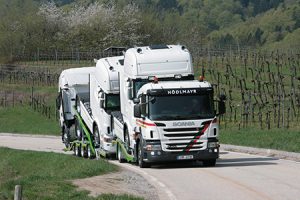 Driver training is essential to overcoming the additional risks of bulkier loads
Driver training is essential to overcoming the additional risks of bulkier loadsFamily vehicles, including station wagons (estate cars) with larger doors and lower sills, are often put on transporters with longer skids to eliminate sill and bumper scuffing, Hindley adds. However, there are instances where transporter design simply lags behind developments for passenger vehicles.
“The issues are with older transporters with steeper access ramps that were not designed to reflect changing trends in vehicle design. Therefore, instances of damage to the lower skirts occur,” he confirms.
One OEM that has found a good way around some of the problems created by low ground clearance is Ford, which has begun inserting spring stuffer blocks made of foam to avoid damage to lower profile cars. Sean Grant, supervisor for quality and claims at the OEM’s North America vehicle logistics division, says these add an extra inch (2.54cm) to the height in the suspension coils, helping to avoid any damage from dragging when loading or unloading a transporter. At the vehicle’s destination, the blocks are simply pulled out. Hindley also identifies an increasing use of foam blocks to protect bumpers, quarter panels and door edges.
[sta_anchor id="1"]Muscle-bound motorsWhile there has been a broad move towards lower ground clearances, more recently the global automotive industry has seen a boom in SUVs and crossovers, which tend to have higher ground clearances.
This sales rush has therefore helped reduce damage risks compared to the lower vehicles, confirms Toyota’s McGlynn. But higher ground clearances can cause problems of their own, he points out. “The negative factor is that they have a higher center of gravity and could more easily break free of the rail securements [which hold a car in place in a railcar] if the railcars are mishandled during shipment,” he explains. “For example, we have more challenges with the Tacoma [pickup truck] jumping the securement than with the Camry or Corolla [sedans].”
The rise of SUVs has also meant supply chains having to cope with bigger and bulkier vehicles, which leads to problems of height or width clearance around them during transit. “Vehicle width creates strain on damage-free transporter loading or compound parking, and needs bespoke handling requirements and structural adaptation to minimise a risk that many are eager to overlook,” confirms James Sadlier, director of damage claims analyst Sevatas.
Vehicle logistics provider Hödlmayr International also highlights increases in length, width and height as a problem – both in terms of passenger cars and high-and-heavy equipment. Among the design changes affecting vehicle size are roof-mounted aerodynamic fairings (panels intended to reduce drag) on heavy trucks, and rear spoilers on passenger cars, both of which have raised the risk of damage.
“It is clear that with bigger vehicles, the damage risk is increasing,” comments Paul Steininger, the company’s head of international sales and business development.
"Since cars have been growing in size during the past decade, challenges to minimising the damage ratio have occurred because of reduced sight and overview as well as greater blind spots on SUVs and commercial vehicles." - Sjors Bosvelt, C.Ro Ports Automotive
Oversized bodies are not just a problem in terms of transport, however, but also storage. Mark Hindley says Paragon has chosen to designate particular storage areas that offer more manoeuvring space at some of its sites to SUVs and other large vehicles. While that restricts storage flexibility and compromises overall site efficiency, segregating such vehicles into locations with more room lowers the direct risk of bumps and scrapes, and improves visibility in other parts of the site where smaller vehicles are stored, he says.
Sjors Bosvelt, general manager at C.Ro Ports Automotive Rotterdam, which provides vehicle forwarding, handling and storage, among other services, agrees that the size of many SUVs is an issue, both in terms of storage and handling space. For block storage, Bosvelt says the average marked layout per car has grown from 13 sq.m to 16 sq.m while for SUVs, 20-30% more is typically needed and sometimes as much as 50% more. There are also issues in terms of the field of view some models provide from the driver’s seat, he says.
“Since cars have been growing in size during the past decade, challenges to minimising the damage ratio have occurred because of reduced sight and overview as well as greater blind spots on SUVs and commercial vehicles,” he suggests.
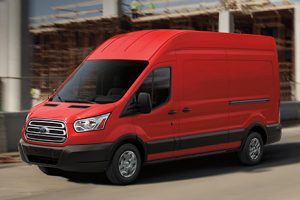 To accommodate the three roof heights of its Transit van, Ford resorted to raising the lower deck ceiling in a large number of bi-level railcars in the US
To accommodate the three roof heights of its Transit van, Ford resorted to raising the lower deck ceiling in a large number of bi-level railcars in the USSometimes, the problems of bulky vehicles can be circumnavigated with particular loading patterns. When Ford introduces the F-150 Raptor pickup truck this year, for instance, which is wider than the current F-150, it will need to be loaded into the rear two spaces on the top deck of car transporters as part of Ford’s damage prevention protocol, says Sean Grant.
In other cases, however, the transport vehicle itself has to be tweaked to accommodate the size of modern loads. For example, Ford ships its Transit van in three roof heights – low, medium and high; the latter two, which are 100 and 112 inches respectively, do not fit into standard bi-level railcars in North America. The carmaker therefore looked towards convertible equipment that could better accommodate the vehicles.
“We worked with the railroad to convert large numbers of articulated bi-level railcars by raising the lower deck’s ceiling,” says Sean Grant.
The use of such convertible equipment has been extended far beyond Ford’s shipment of the Transit. “We operate closed loops between the plant and rail ramp and were able to implement these railcars ultimately at 25 ramps and 12 plants in the US and Canada,” he adds.
Driver training in how to handle today’s more bulky loads is also essential, says Paul Steininger of Hödlmayr, which has training and damage prevention programmes in place and uses its driver trainers to evaluate the complete chain to identify possible risks.
Whatever the driver training and whatever the loading pattern, however, the growing size of SUVs means some equipment has simply become redundant. Smaller car transporters, originally designed to carry two standard vehicles, for example, can sometimes no longer do so. In response, some carriers in the UK have resorted to trade-plate delivery, with individual units being simply driven to their destination by company drivers (a method particularly common in the UK for delivery of company cars). That brings its own risk, however, points out Mark Hindley – in particular that of damage to bodywork and windscreens from road debris under normal driving conditions.
In other cases, changes in vehicle size have led to lower loading factors on transporters. Sean Grant points to the example of the Ford Escape, introduced two years ago and one inch longer than the previous issue. “The load factor decreased from 12 units per railcar to 10 units, a 17% reduction,” he recalls.
[sta_anchor id="2"]Waterborne worriesWhen it comes to loading vehicles onto barges or ships, many of the same constraints relating to dimensions apply as with land transport, though James Sadlier believes carriers are less concerned with the length and breadth of cars and more with roof height and ground clearance, especially for older vessels. “The lower the car, the higher the risk on [vessel] ramps,” he confirms. “Most internal ship ramps have been engineered with significant clearance for the multiple loads they transport. But this is not the case with older ships, where the ramp-to-quay angle and discharge speeds are of primary concern.”
Bjørn Svenningsen, head of sales and marketing at short-sea shipping provider United European Car Carriers (UECC), stresses that where an OEM uses the same basic model name for a whole range of vehicles, it is vital to be clear about the vehicle height if proper space on the vessel is to be allocated.
Another factor for vessels has been the trend in recent years for OEMs to engineer out welded-on towing or lashing points on the vehicle frame, to comply with crumple-zone legislation. This forces vessel operators to apply other solutions that could conceivably cause damage, he cautions. “This means the marine carriers either have to use a screw-in lashing eye, as fitted by the OEM, or apply lashings to the wheels,” he notes.
UECC has spent some time evaluating and re-engineering on-board lashing materials as a result, he says, and has largely switched to plastic-coated lashing hooks, rather than bare metal ones, to secure the front and rear of vehicles to the deck.
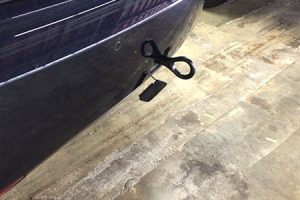 The use of a tow hook on the rear bumper reduces the need for tie-down wheel straps, though many OEMs have phased them out
The use of a tow hook on the rear bumper reduces the need for tie-down wheel straps, though many OEMs have phased them outThe shipping line has also been reconsidering the angle of a vessel’s ramp to quay. “At the ports, we work closely with our service suppliers to evaluate whether approach and departure angles from ramps are adequate. If they are not, a portable steel bridging piece is used to soften the angles,” says Svenningsen.
Meanwhile for new shipping vessels, the company is about to start introducing a steam heating system to warm up ramp decks – important for use in areas like the Baltic Sea, where winter sea ice and low temperatures mean that once a ramp is down, its deck quickly becomes frozen.
Not all OEMs have been removing useful transport features, however. In North America, at least, some have moved deliberately towards their use. Grant McGlynn of Toyota confirms tow hooks have been included on some of its export vehicles for about two years, adding: “By using a tow hook on the bumper, we do not need to use a tie-down strap on the wheel, which could scratch the wheel. The result has been fewer scratches.”
Wheels are, in themselves, a particular area of risk in terms of damage during transit and can be difficult to protect, says Mark Hindley. “For polished alloys, OEMs have been moving away from tyre sidewall protection beading so that the tyre is flush with the wheel,” he says. “This increases the risk of damage during refurbishment or compound movements. With the increase in polished alloys across numerous models, refurbishment centres require dedicated wheel refurbishment facilities.”
James Sadlier of Sevatas adds that chock placement is very important in rail transport to avoid wheel damage, especially as a result of the increased use of ‘diamond cut’ wheels, which are high-cost items that can be difficult to repair economically.
[sta_anchor id="3"]Opting for damage riskThe choices OEMs make about how to build and ship their vehicles have a big impact on the level of damage they can sustain in other ways, too.
While carmakers often use use foam blocks to protect vulnerable parts of a vehicle, Bjørn Svenningsen of UECC says some have sought to reduce costs by cutting the levels of protection that they apply at the factory, raising the damage potential in transit. Reducing this protection can be particularly risky because of the switch from solvent to water-based paints following stricter regulations over the past decade. Since paint is typically still hardening during the transport process, these ‘softer’, less resilient finishes are more prone to damage, and can benefit from wrap guard or body coverings.
Grant McGlynn adds that the increased use of unpainted plastic parts on vehicles – especially on SUVs and pickup trucks to give them a more rugged appearance – has also been a challenge as such parts are easily scuffed. “Toyota worked with dockworkers to identify how damage [to such parts] was occurring and has since seen an improvement,” he comments.
Another issue that can lead to damage is the growing use of electronic handbrakes in vehicles, with McGlynn pointing out that it is much less obvious with an electronic handbrake whether it has been properly applied, compared to the quick visual check that confirms the position of a manual one.
 "Due to headcount and cost reductions in logistics budgets [at OEMs]… load trials and quality activity services are increasingly being seen as the responsibility of the LSP… sometimes without warning and without checking that they have the skills." - James Sadlier, Sevatas
"Due to headcount and cost reductions in logistics budgets [at OEMs]… load trials and quality activity services are increasingly being seen as the responsibility of the LSP… sometimes without warning and without checking that they have the skills." - James Sadlier, Sevatas
[sta_anchor id="4"]Think of damage years in advanceProper planning can help mitigate many of the damage risks involved in supply chains, including understanding logistics and delivery requirements as early in a vehicle’s development phase as possible. However, while some OEMs are good at communicating changes to their products – like dimensional shifts, ride heights and starting procedures – to logistics partners, others are not and remain resistant to doing so.
Ford is among those companies that does look ahead. Sean Grant says that two years before a vehicle is released, the company starts a damage prevention process that includes, among other measures, tests with rail and road carriers to determine risky touch points, for example.
But not all OEMs think that far ahead – while in some cases even two years before may not be enough. James Sadlier of Sevatas says product design is still commonly carried out without any reference to trucking companies or other logistics providers and little consideration is given to how vehicles will move from plant to customer until the car is in pre-production or sometimes even later.
“A step-change is required by some in the industry in order to minimise damage and disruption,” he comments. “Some are already there, taking a holistic view of their production through to customer experience, but due to headcount and cost reductions in logistics budgets, there has been a loss of quality-related staff.
“As a result, load trials and quality activity services are increasingly being seen as the responsibility of the LSP,” he adds, “sometimes without warning and without checking that they have the skills.”
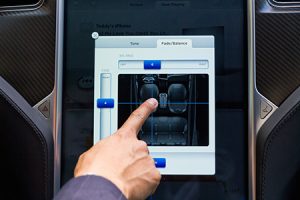 Tablets and other high-tech gadgets in vehicles can attract more incidents of theft in the outbound supply chain
Tablets and other high-tech gadgets in vehicles can attract more incidents of theft in the outbound supply chainNot all damage, of course, occurs accidentally, with theft and vandalism a major problem in some supply chains.
Toyota Logistics Services’ Grant McGlynn admits that anything that isn’t fully secure on a vehicle is subject to theft, citing the example of the secure digital (SD) memory cards Toyota has in its cars. “Our multimedia head units have been redesigned to allow for easy access to the SD card. As a result, we have experienced some theft,” he confirms.
According to McGlynn, the carmaker even discovered that SD cards missing from several of the Toyota Camry models built at its plant in Georgetown, Kentucky were subsequently being sold at a nearby auction site by, Toyota claims, one of its logistics providers. McGlynn declines to name which provider or providers were allegedly involved, except to confirm that the theft was linked to a company or companies, and not individual drivers. Toyota has taken legal action against those involved, he says.
UECC’s Bjørn Svenningsen points out that carmakers are increasingly fitting equipment to vehicles that has a value on the black market, from compressors to tablet computers. Tablets, which are now particularly common in high-end vehicles, are subject to theft even when locked under the moulding of an armrest or hidden elsewhere in the centre console, he warns. They can also be difficult to replace and delay final delivery when stolen since dealers tend not to carry extras in stock as they are so expensive, and thus must source new tablets from OEMs.
In North America, carmakers also continue to see consistent problems with theft and vandalism in exporting cars from Mexico to the US by rail – especially in locations where trains stop or are delayed for any prolonged length of time – with key fobs, spare tyres and other equipment known to regularly disappear. Audi is among those to have highlighted the issue recently.
While OEMs hope that improvements to rail infrastructure in Mexico will help reduce delays, Mexican railways have had to invest more significantly in security to maintain lower damage rates. Some carmakers are also looking increasingly at short-sea shipping options to avoid rail routes, such as in Mexico’snorth-west, which are more prone to vandalism than elsewhere.





